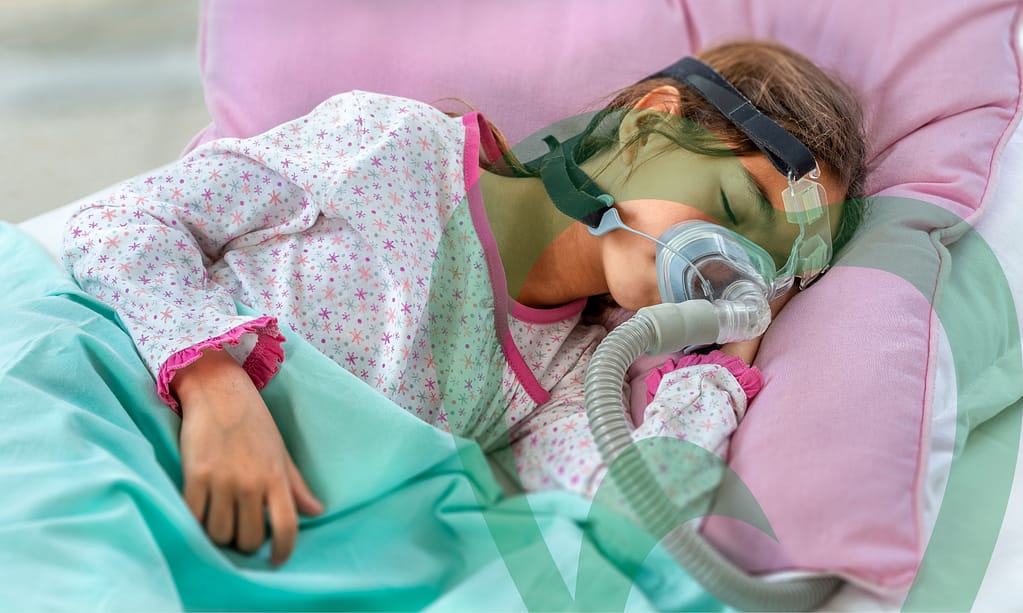How Sleep Apnea Affects Children: Signs to Look For and Treatment Options

What is obstructive sleep apnea, and isn’t that only a condition in older people?
Obstructive sleep apnea is a potentially serious condition where throat muscles relax and obstruct the airway during sleep. This leads the patient to jolt awake suddenly as they gasp for breath. While more common in adults, this condition can affect children, and symptoms shouldn’t be ignored. There are effective treatments available to your child.
Signs of sleep apnea in children.
Identifying sleep apnea symptoms in children can be difficult. Many can be caused by other factors, so your mind might not jump to this condition right away. Snoring is one of the most common and can be easily overlooked. If you’ve ever considered looking into how to stop snoring for your child, you should consider sleep apnea as a possibility.
Other symptoms of sleep apnea in children can appear to be independent issues that you might not connect to the condition. Bed-wetting is a relatively common problem among children, but it can also be a sign of this condition. This is especially true if your child has previously established a pattern of staying dry at night.
When you check in on your child, you might notice that they are restless in their sleep. This is another potential sign of sleep apnea. You might not be there when they jolt awake, but any significant movement could be related to the condition.
Keep in mind that you can’t count on your child to report their own symptoms. Even in adults with obstructive sleep apnea, it is common not to remember any episodes of sudden waking. The patient typically falls back asleep right after. Alternatively, they might attribute waking to another cause.
Daytime sleepiness is another prime indicator of this condition in children. Again, your child may not communicate this effectively. Watch for signs of sleepiness and fatigue, such as falling asleep during other activities. Behavioral problems at school or at home could also be related to daytime sleepiness.
The impact of untreated sleep apnea.
Sleep apnea can temporarily restrict breathing during sleep, which is a deeply frightening concept. However, this jolts the individual awake, at which point they quickly gasp and resume breathing. Unless other serious conditions are present, the danger isn’t suffocation. Instead, it’s the wide range of other impacts the condition can have.
There are long-term health risks associated with sleep apnea. Events of restricted breathing lead to a sudden spike in blood pressure as the body compensates for dropping oxygen levels. Over the course of several years, this can significantly increase the risk of your child developing a variety of heart conditions, along with high blood pressure, high cholesterol, and diabetes.
The disrupted sleep caused by this condition is connected to a variety of mental health concerns. For instance, sleep apnea can increase the risk of depression in your child. Daytime fatigue can also cause issues at school, preventing your child from thriving and developing properly in that area.
Available treatment options for pediatric sleep apnea.
While the potential impact of this condition in children is serious, there are many treatment options available. Depending on the severity of your child’s condition, they may require one or more of these options to either control or resolve their sleep apnea.
In adults, sleep apnea is often caused by a combination of lifestyle factors. In children, the root cause is often enlarged tonsils or adenoids that make it easier for the airway to close during sleep. If this is the case, your child will likely require surgery to remove their tonsils or adenoids.
In some cases, a variety of medications may improve symptoms of this condition. If your child’s sleep apnea is related to swelling, infection, or other elements, medications that target those issues can provide effective relief.
The use of a continuous positive airway pressure (CPAP) machine is also a potential treatment option. A mask worn over the nose provides constant air pressure, which prevents the airway from closing during sleep.
In mild cases of sleep apnea, a custom nightguard can be an effective and non-invasive treatment option. The nightguard is shaped to ensure that your child’s jaw stays in a position that stops the throat muscles from relaxing and closing the airway. Nightguards are also highly effective in dealing with bruxism, which is grinding or clenching teeth during sleep.
Visit your dentist near Omaha to learn more about sleep apnea.
Are you concerned that your child is showing symptoms of obstructive sleep apnea? If so, you can visit The Tooth Doc to find out more. We can evaluate your child’s condition and refer you to a sleep specialist for diagnosis if sleep apnea is likely. From there, options, such as custom nightguards, could provide effective treatment. Schedule a consultation with your trusted dentist in Omaha today to get started.